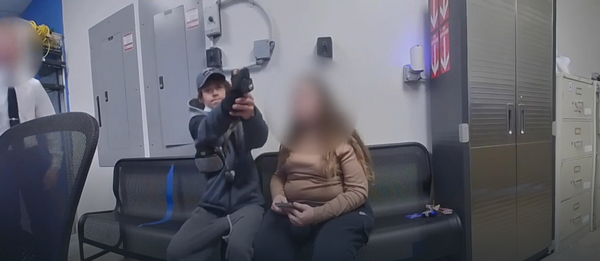
There’s something nostalgic about older homes—the creaky floors, detailed woodwork, and classic architecture exude charm and character. But behind the cozy facade, many aging homes harbor hidden dangers that can pose serious health risks to you and your family.
What was once considered state-of-the-art in the 1950s, ‘60s, or ‘70s can now be outdated or outright dangerous. And because these issues often go unnoticed for years, they can cause silent harm before anyone realizes what’s happening. From harmful building materials to poorly ventilated systems, older homes demand a closer look if you want to live safely within them.
Here are eight hidden health risks you should know about before settling into that storybook house.
8 Hidden Health Risks Lurking in Older Homes
1. Lead Paint That’s Still Hiding on the Walls
If your home was built before 1978, there’s a good chance it contains lead-based paint, especially under newer coats. Even if it’s been painted over, peeling or chipping paint can release toxic lead dust into the air or contaminate floors and furniture.
Lead exposure is especially dangerous for children and pregnant women, leading to developmental delays, behavioral problems, and neurological damage. Adults can suffer from high blood pressure, kidney damage, and memory issues. And because lead has no safe exposure level, even small amounts over time can be harmful.
Home lead tests and professional abatement services are a must if your home hasn’t been assessed. Don’t assume fresh paint means you’re in the clear.
2. Asbestos Lurking in Walls, Floors, and Ceilings
Asbestos was once hailed as a miracle material—strong, fire-resistant, and cheap. But today, we know it’s a serious carcinogen. Asbestos was used in everything from insulation and popcorn ceilings to vinyl flooring and even siding up until the late 1970s.
When asbestos materials are disturbed—during renovations, for instance—they can release tiny fibers into the air. Inhaling these fibers over time increases the risk of diseases like mesothelioma, lung cancer, and asbestosis.
The scary part? You won’t see or smell it. You could be breathing in dangerous fibers for months before symptoms appear. If your home was built before the 1980s, have a professional conduct an asbestos inspection before any remodeling.
3. Mold Growing in Forgotten Places
That musty smell in the basement or under the sink isn’t just unpleasant. It could be mold. Mold thrives in dark, damp environments, and older homes with outdated plumbing, poor drainage, or leaky roofs are prime breeding grounds.
Beyond causing allergies and asthma flare-ups, certain types of mold (like black mold) can lead to respiratory infections, chronic sinus issues, fatigue, and even neurological symptoms if exposure is prolonged.
The problem is often worse than it looks. Mold can hide behind walls, in crawl spaces, or under flooring. Regular inspections, proper ventilation, and quick responses to leaks are crucial to keeping your home mold-free.
4. Radon Gas Seeping Through the Foundation
Radon is an invisible, odorless radioactive gas that naturally occurs in soil. It’s also the second leading cause of lung cancer in the United States, behind smoking.
Older homes with cracked foundations, poor sealing, or outdated construction techniques are more vulnerable to radon infiltration. The gas seeps up from the ground and can accumulate in basements and lower-level rooms.
A radon test kit is inexpensive and easy to use, yet many homeowners skip it entirely. If your test comes back high, a radon mitigation system can vent the gas safely outdoors and protect your household from long-term harm.
5. Outdated Electrical Wiring That’s a Fire Hazard
Many older homes still operate with knob-and-tube or aluminum wiring—systems that were never designed to handle today’s power-hungry appliances and electronics. These outdated systems not only overload easily but are often brittle, frayed, or exposed in places you can’t see.
The result? An increased risk of electrical fires, especially in attics and behind walls. Even if you’ve never had a blown fuse, you could be one overloaded circuit away from disaster.
A licensed electrician can inspect your wiring and upgrade your system to modern standards. Don’t let the charm of a vintage house blind you to the risk of an invisible, catastrophic fire.
6. Pest Infestations That Trigger Allergies and Illness
Rodents and insects love old homes for the same reasons people do: lots of hiding places, warmth, and easy entry points. But beyond the annoyance factor, pests like mice, cockroaches, and dust mites can contribute to serious health problems.
Cockroach droppings are a well-known asthma trigger, especially in children. Rodents can carry diseases like hantavirus or leptospirosis. And dust mites—tiny creatures living in upholstery and carpets—can worsen allergies and eczema.
If you hear scratching in the walls, see droppings, or feel like your allergies are worse indoors, it’s time to bring in a pest control professional. Regular sealing, deep cleaning, and moisture control are key to keeping infestations at bay.
7. Hidden Water Damage Leading to Airborne Toxins
Water damage isn’t always obvious. A small leak under the floorboards or behind a shower wall can create the perfect environment for bacteria, mildew, and mold. Left unchecked, it can degrade wood and rust pipes and compromise the structural integrity of your home.
What’s more, this kind of damage can release volatile organic compounds (VOCs) and mycotoxins—harmful airborne substances that irritate the lungs and eyes, weaken your immune system, and even impact cognitive function over time.
If you notice warped flooring, bubbling paint, or a consistent musty odor, investigate further. The longer water damage is ignored, the more dangerous and expensive it becomes.
8. Poor Indoor Air Quality from Dust, Chemicals, and Old Materials
Older homes tend to be poorly ventilated, especially if windows have been sealed shut or HVAC systems haven’t been upgraded. Combine that with decades of dust buildup, chemical residues from old paints or cleaning products, and off-gassing materials, and you’ve got a recipe for poor indoor air quality.
Breathing this kind of stale, contaminated air can exacerbate respiratory conditions, cause headaches and fatigue, and worsen cardiovascular health. For seniors, children, or anyone with pre-existing conditions, the effects can be even more pronounced.
Investing in air purifiers, cleaning out old ducts, and ensuring proper ventilation (especially in kitchens and bathrooms) can drastically improve your home’s air quality and your quality of life.
Don’t Let a Charming Home Harm You
Older homes may offer character, but they can also conceal serious threats to your health and well-being. While not every vintage house is a death trap, the risks are real—and they’re often hidden in plain sight. Don’t wait for a health scare to investigate what’s lurking behind those walls.
A professional home inspection focused on environmental health risks is worth every penny—especially if you’re planning to live in the home long-term or renovate. Prevention costs far less than dealing with a crisis later.
Have you discovered a hidden danger in your home or taken steps to make your aging house healthier?
Read More:
Why Your Homemade Cleaning Spray Might Be Destroying Your Air Quality
6 Things You Should Take a Closer Look For During Your Final Walkthrough Before Closing On Your Home
The post 8 Hidden Health Risks Lurking in Older Homes appeared first on Clever Dude Personal Finance & Money.







